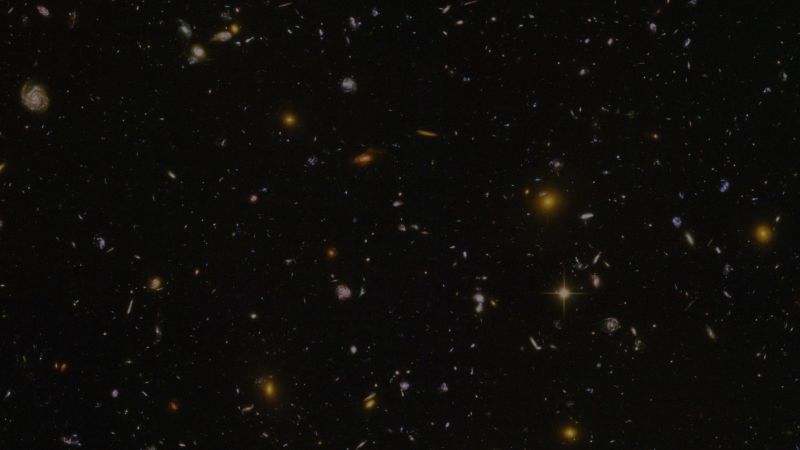
Nobel Prize awarded for discovery of quantum dots that changed everything from TV displays to cancer imaging
The 2023 Nobel Prize in chemistry has been awarded to a trio of scientists who worked to discover and develop quantum dots, used in LED lights and TV screens, as well as by surgeons when removing cancer tissue.
Moungi Bawendi, Louis Brus and Alexei Ekimov were lauded as “pioneers in the exploration of the nanoworld” by the Nobel committee for chemistry as it announced the prize in Swedish capital Stockholm on Wednesday.
“For a long time, nobody thought you could ever actually make such small particles. But this year’s laureates succeeded,” said Johan Aqvist, chair of the committee.
Heiner Linke, a member of the chemistry committee, explained at the announcement ceremony what made the laureates’ work so revolutionary.
“The core thing about quantum dots is that, just by changing their size… you change their properties, for example their color. This is completely unusual,” Linke said.
“If you imagine, for example, you want to dye T-shirts – a red one, a green one, a yellow one, a blue one. For each of these colors, you would use a different molecule. Different atoms in different constellations give you different colors – that’s what chemistry is all about,” he said.
But, thanks to the scientists’ work in nanotechnology, quantum dots allow us to “use precisely the same atoms in the same constellations and just change the size, how many of the atoms you have, and get new colors and new other properties.”
Bawendi, a professor at the Massachusetts Institute of Technology, and Brus, professor emeritus at Columbia University, are American. Ekimov is Russian and works for Nanocrystals Technology Inc., which is based in New York.
Uncovering a new world of color
In the “nanoworld,” matter starts to be measured in millionths of a millimeter. At this level, strange phenomena start to occur called “quantum effects.”
Quantum dots consist of just a few thousand atoms. In terms of size, one quantum dot is to a soccer ball as a soccer ball is to the Earth.
In the early 1980s, this year’s chemistry laureates Louis Brus and Alexei Ekimov succeeded in creating
– independently of each other – quantum dots, which are nanoparticles so tiny that quantum effects determine their characteristics.#NobelPrize pic.twitter.com/QPd3AhaBeX
— The Nobel Prize (@NobelPrize) October 4, 2023
When light is passed through quantum dots they emit a specific color. This can be finely tuned and is determined by the size of the dots. The bigger dots glow red, while the smallest glow green or blue.
The slightest of changes in the size of the particle can change its hue right across the spectrum of the color wheel.
The laureates’ work has allowed scientists to capitalize on some of the properties of the nanoworld, and quantum dots are now found in living rooms and operating theaters across the world.
They are now widely used in TVs and have several advantages over traditional LCD panels, creating more vibrant and accurate colors, as well as requiring less energy to operate.
The dots are also widely used in medical diagnostics. Doctors use them to illuminate molecules that can bind themselves to cancer tumors, allowing the surgeon to distinguish the healthy tissue from the diseased.
The Nobel committee explained how the scientists’ work had helped develop quantum dots.
In the 1980s, Ekimov created size-dependent quantum effects in colored glass. A few years later, Brus became the first scientist to prove size-dependent quantum effects in particles floating freely in a liquid.
In 1993, Bawendi then changed the chemical production of quantum dots, resulting in what the committee called “almost perfect particles.” This development allowed the dots to be used in applications.
Judith Giordan, president of the American Chemical Society, praised the laureates’ work.
An unfortunate mistake
The deliberations of the Nobel committee are usually shrouded in total secrecy. No shortlists for the Nobel prizes are revealed and the winners are called shortly before the official announcement.
But the Swedish Academy of Sciences inadvertently published the name of the winning trio before the official announcement on Wednesday.
Swedish newspaper Aftonbladet published a copy of an email it said was from the academy, Reuters reported. Aqvist told Reuters ahead of the announcement that the email had been a “mistake” and stressed that a final decision had not been made. But hours later, the leaked names were confirmed as laureates.
“Let me say that this is of course, very unfortunate. We deeply regret what happened for sure,” Hans Ellegren, secretary general of Royal Swedish Academy of Sciences, said at the announcement ceremony.
“There was a press release sent out for still unknown reasons. We have been very active this morning to trying to find out what actually happened but at this place, we don’t know that. we deeply regret that this happened. The important thing is that it did not affect the awarding of the prize.”
